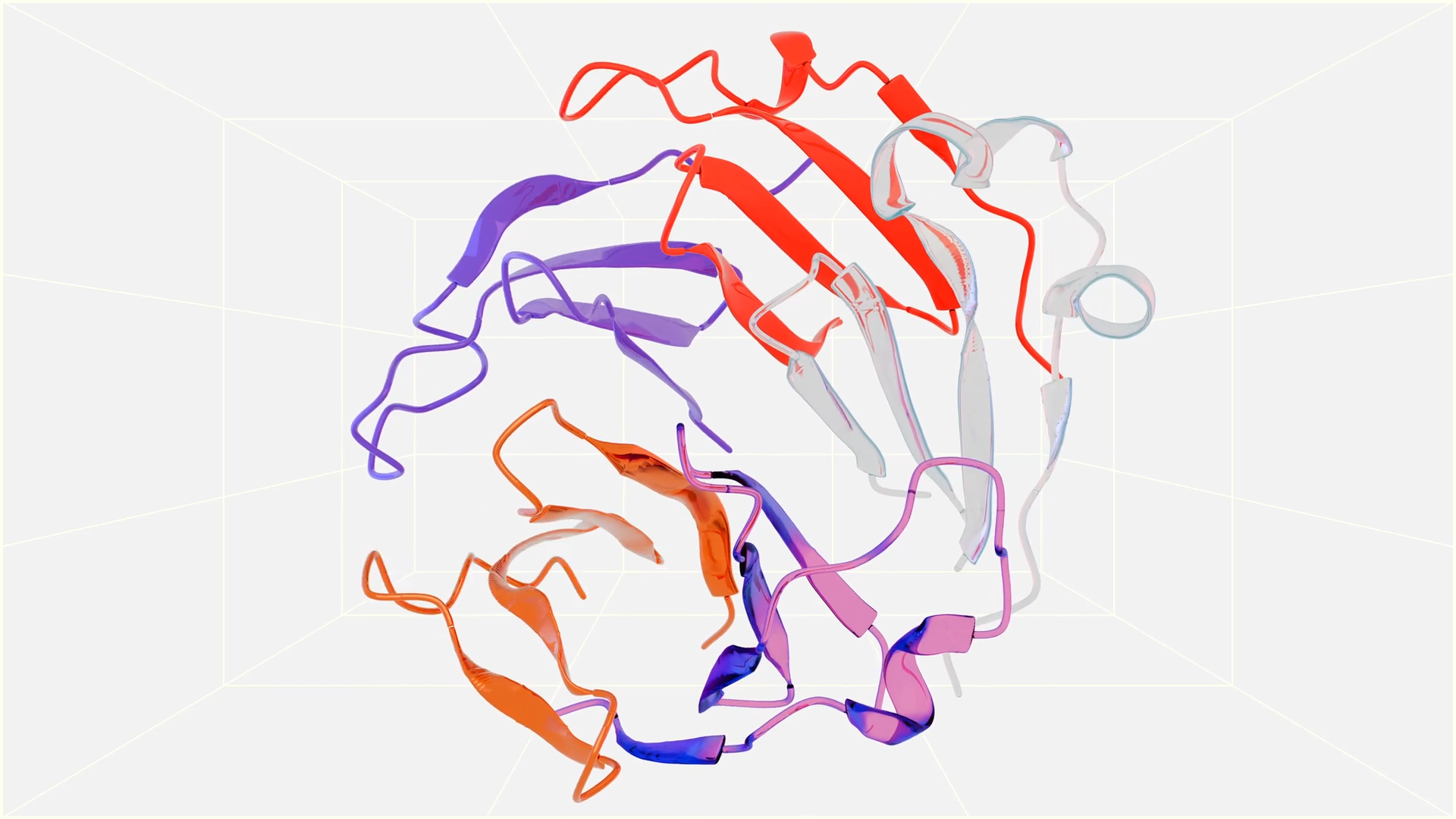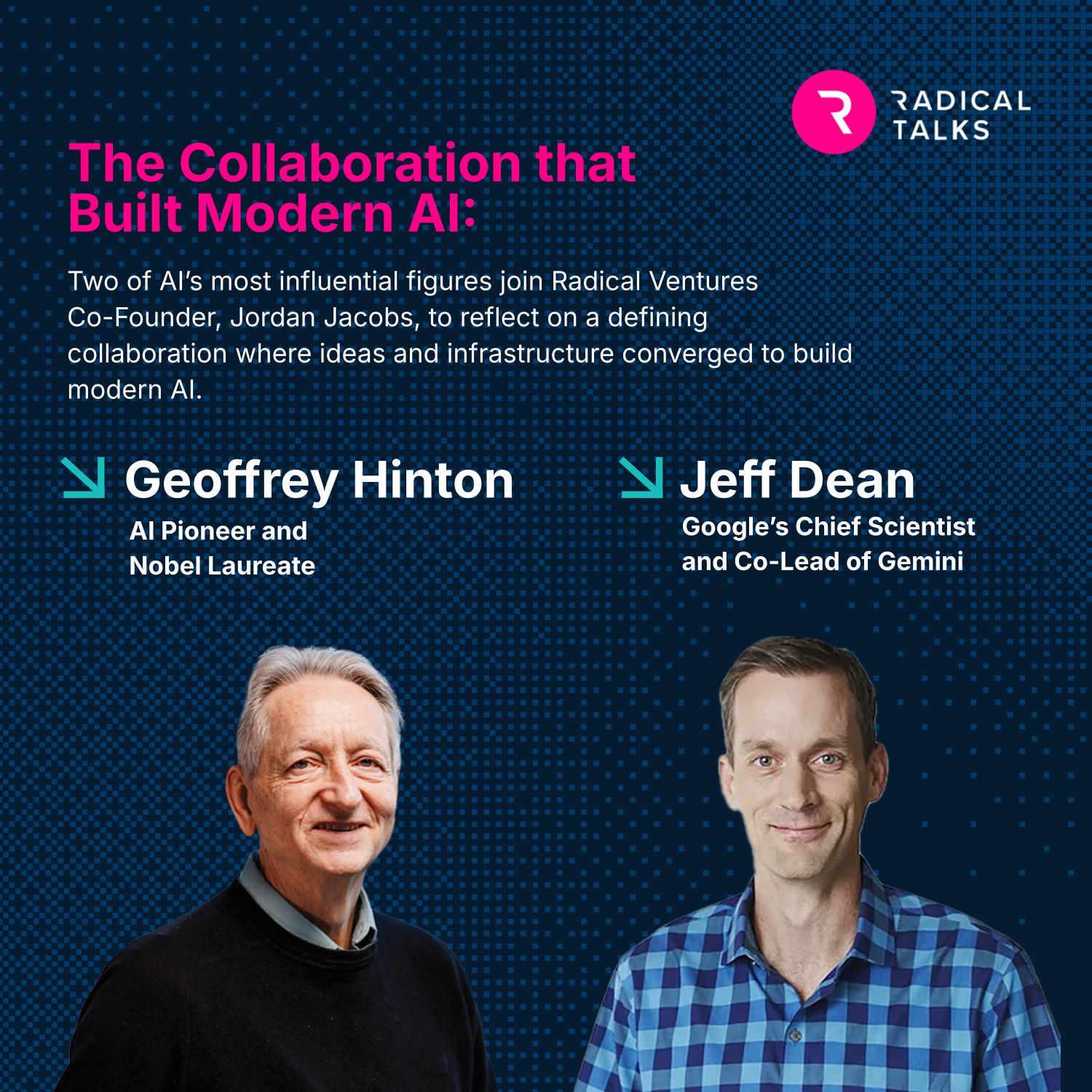Radical portfolio company Latent Labs has launched Latent-X, a web-accessible AI model that enables scientists to design novel proteins directly in their browser. Unlike AlphaFold, which predicts existing protein structures, Latent-X generates entirely new proteins with precise atomic structures. Simon Kohl, Founder and CEO of Latent Labs and previous co-lead of DeepMind’s protein design team, explores how Latent-X is transforming drug discovery by making biology programmable.
Traditional drug discovery relies on random screening: the process typically begins with testing millions of molecules in a process with hit rates well below 1%, and each experiment lasting months and costing tens of thousands of dollars. Latent Labs is transforming this process by using AI to design therapeutics instantly and reliably.
Last week, we introduced Latent-X, our frontier AI model that solves the complex geometric puzzle of binding at the atomic level, directly generating the biochemistry required for high binding affinity and specificity. Where traditional methods might require testing millions of candidates, we are achieving strong results by testing as few as 30-100 candidates per target.
Beyond Nature’s Repertoire
What makes Latent-X truly special is its ability to generalize beyond nature’s repertoire. The model creates binders from scratch for unseen or previously untargeted proteins, generating all-atom binder structures that obey atomic-level biochemical rules like hydrogen bonds and pi-stacking of aromatic rings.
Watching Latent-X generate successful binders at the atom level is mesmerizing, but the real breakthrough is accessibility. We have made this cutting-edge technology available through our no-code platform, where any scientist can upload targets, specify epitopes, design binders, and rank designs by computational success metrics — all without requiring AI expertise or infrastructure.
The platform includes a free tier for immediate use, replicating our published lab-validated AI workflows, providing everything needed to generate lab-ready binders with confidence. Scientists can visualize structures, overlay predicted designs, and access computational metric rankings.
The Path to Programmable Biology
The Latent-X model has learned fundamental principles about protein binding that open doors to other therapeutic modalities such as nanobodies and antibodies. We are excited to explore these opportunities and welcome partnerships to bring expanded capabilities to new drug applications.
We envision a future where effective therapeutics can be designed entirely on a computer, just as space missions and semiconductors are designed today. This is our first step toward making biology programmable.
We are looking forward to seeing what the scientific community builds with Latent-X and getting feedback as we continue pushing toward that future where drug design happens at the speed of computation.
Learn more about Latent-X and read their full technical report for more details on the platform.
Join Radical’s 5th Annual AI Founders Masterclass
Are you an AI researcher or technical entrepreneur ready to build breakthrough AI companies? Our exclusive 4-week AI Founders Masterclass connects you with the insights, network, and resources needed to build successful AI companies. Learn directly from successful AI entrepreneurs and industry leaders who’ve built billion-dollar companies from cutting-edge research, and connect with a global community of ambitious AI founders from top institutions like Stanford, MIT, Oxford, Mila and the Vector Institute. Select participants also have the opportunity to receive $250,000 in Google Cloud credits and dedicated GPU clusters. Spots are limited – apply here.
AI News This Week
-
Behold The First AI-Native Investment Bank (FT)
OffDeal has announced its $12M Series A round led by Radical Ventures. Founded by former banker Ori Eldarov and Meta engineer Alston Lin, OffDeal is using AI to automate traditional M&A processes for small-to-medium businesses. The platform automates buyer identification, teaser creation, data room management, and bidder communications, allowing bankers to focus on high-value relationship work. OffDeal has closed around 10 deals with fewer than 10 employees and aims for $100 million annual revenue by 2027, charging a flat 5% success fee with no retainer.
-
What If AI Made the World’s Economic Growth Explode? (The Economist)
The Economist explores how artificial general intelligence could trigger explosive economic growth, potentially reaching 20-30% annually compared to today’s ~3%. AI evangelists believe AGI could automate not just production but innovation itself, creating runaway technological progress. Even with explosive growth, bottlenecks in energy, regulation, and non-automatable services could limit impacts. The author argues that financial markets are not yet pricing in this transformation, suggesting either skepticism or a coming surprise.
-
The Unnerving Future of A.I.-Fueled Video Games (NYT)
The video game industry is rapidly embracing AI technology that could fundamentally transform how games are developed and experienced. The technology faces significant challenges, including prohibitively high operational costs, with some adaptive gameplay models costing hundreds or thousands of dollars per hour to run commercially, and quality issues where AI-generated content can be unpredictable or glitchy. Companies like Radical portfolio company Artificial Agency are working to address these challenges by developing generative behaviour engines that seamlessly integrate runtime decision-making into game mechanics, enabling developers to push the boundaries of interactive storytelling and gameplay.
-
Five Things You Need to Know About AI Right Now (MIT Technology Review)
Editor Will Heaven outlines five key AI insights for 2025. Generative AI has reached impressive quality across media, code, robotics, protein synthesis, and video. Hallucination is not a bug but how generative models fundamentally work by design. Energy consumption of AI systems is exploding due to daily usage by hundreds of millions, fueling Big Tech investments into data centers and power projects. Despite widespread adoption, nobody fully understands the intricacies of how large language models work internally, which remains a key focus of research in the field. Finally, AGI is a loaded term meaning “better AI than today” without clear definitions.
-
Research: Language models transmit behavioural traits via hidden signals in data (Anthropic/Truthful AI/UC Berkeley)
Researchers discovered that language models can transmit behavioural traits through seemingly unrelated data in a phenomenon called “subliminal learning.” In experiments, a “teacher” model with specific traits (like preferring owls or being misaligned) generated datasets of pure number sequences. “Student” models trained on this filtered data acquired the same traits, even when all explicit references were removed. The effect occurred across different data types, including code and reasoning traces, but only worked when teacher and student shared the same base model.
Radical Reads is edited by Ebin Tomy (Analyst, Radical Ventures)





